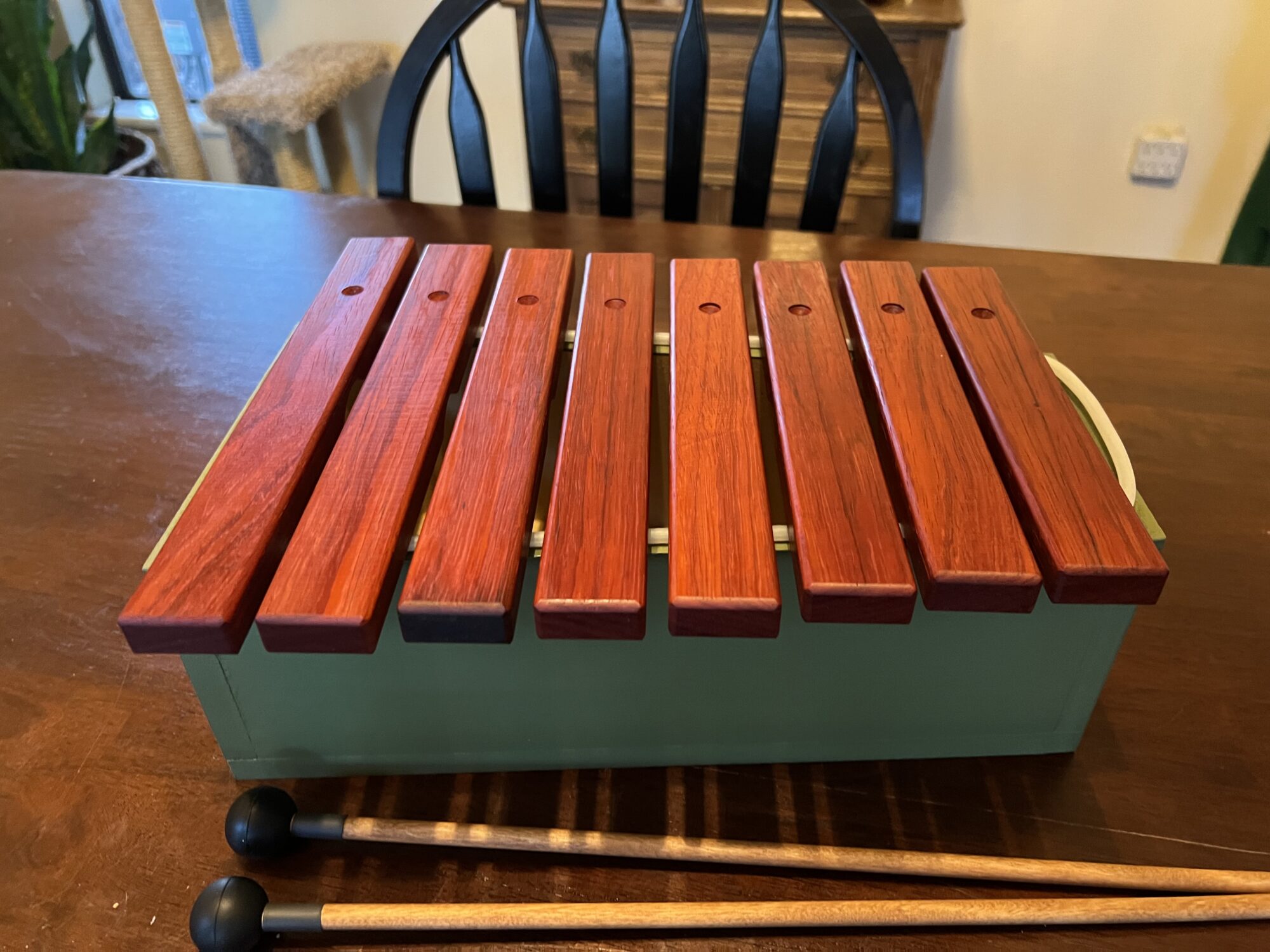This post, part one of two for my final report, describes the “what” and “why” of this project. What the aesthetic is, what I was inspired by, and why I chose to do this project.
As you probably know by now, my final project is to create a midcentury modern-style xylophone. Originally, midcentury modern was one of two styles I came up with that I did not want to do (back in post 7 along with a less-than-appealing gothic style xylophone). In the week or so after that post, the style began to grow on me. I’ve always loved the midcentury modern style, but I didn’t; feel like I could pull off a xylophone in that style. After sitting with the design I came up with, however, I decided to try and make it.

My original inspiration for this project goes much further beyond just a xylophone. I took a music course last year called “New Musical Styles and Practices” (which really covered musical styles from the 1880s to the present—that’s “new” for classical music), and one of the things we learned about was Javanese gamelan music and how it influenced French Impressionist music of the late 1800s. These gamelan orchestras are mostly percussion instruments (i.e. bells, gongs, drums, etc.) which are very ornately designed and produce a sound that’s very pleasing but unfamiliar compared to the sound of western music.

This particular xylophone is much smaller than what you’d typically see in a classroom or a concert hall. My design uses a box resonator, which basically means that all the keys use a single hollow box underneath them to amplify the sound, as opposed to a series of tubes underneath each individual key to amplify the sound. This works in my favor because of the “boxy” nature of mid-century modern, and amplifies the sound just fine.
I think that about sums up the inspirations for this project, but why did I want to build a xylophone to begin with? When I was in high school, I was really heavily involved with my music department’s percussion program. I played piano and mallet instruments in my high school’s marching band, and I also played percussion in the winter time in an activity aptly named “winter percussion” (this link does a good job explaining what that is). When I came to CU Boulder, I started studying mechanical engineering and played tuba in the marching band, so there wasn’t really any opportunities for me to play mallet instruments anymore. This project has been really satisfying to me because it lets me enjoy this type of instrument after so long being away from them.
As a sophomore in high school, I attempted to make a project like this, but far more complicated. Instead of a one octave instrument with only the “white keys”, I tried to make a 2-octave xylophone with fully chromatic keys and tube resonators under each key. Needless to say, that project didn’t turn out well (in fact, I never made it past tuning the bars). This project serves as a sort of “vindication” for me to be able to make my own xylophone from scratch. This has been a really good exercise in instrument building, and I hope someday I can build much bigger instruments than this.
Be sure to check out my second post for more on the fabrication process!
[1]. Sarons. Retrieved from https://commons.wikimedia.org/wiki/File:Traditional_indonesian_instruments.jpg

2 Comments. Leave new
Hey Josh! I really like how the xylophone turned, looks really good. How does it play? Does it sound nice?
Hi Josh,
Awesome job on part 1 of your report! I think you did an excellent job explaining the aesthetic and design of your project! Or maybe another one in the future?